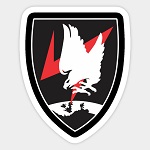Corgi AA38502 German Messerschmitt Bf 110G-4 Night Fighter - Oberleutnant Wolfgang Schnaufer, "The Night Ghost of St.Trond", Nachtjagdgeschwader 1, St. Trond, Belgium, February 1944 (1:72 Scale)
"Guns before butter. Guns will make us powerful; butter will only make us fat."
- Reichsmarschall Hermann Goering, Head of the German Luftwaffe
 The Messerschmitt Bf 110 was an aircraft of very mixed fortunes. It has often been criticized for its failure during the Battle of Britain, while its successes in other fields have been largely ignored. Despite not living up to the Luftwaffe's expectations it did manage to serve Germany throughout the Second World War in the long-range escort fighter, fighter-bomber, reconnaissance, ground attack and night fighter roles.
The Messerschmitt Bf 110 was an aircraft of very mixed fortunes. It has often been criticized for its failure during the Battle of Britain, while its successes in other fields have been largely ignored. Despite not living up to the Luftwaffe's expectations it did manage to serve Germany throughout the Second World War in the long-range escort fighter, fighter-bomber, reconnaissance, ground attack and night fighter roles.
The long-range multi-seat escort fighter is possibly the most difficult of combat aircraft to design. Certainly no entirely successful machine in this category emerged from the Second World War, and when Professor Willy Messerschmitt began design studies for such a warplane towards the end of 1934 at the Bayerische Flugzeugwerke at Augsburg his problems would have seemed insurmountable had he possessed a full knowledge of interceptor fighter development trends abroad. Such a machine as was required by Marshal Goering to equip the elite "zerstorer" formations that he envisaged had to be capable of penetrating deep into enemy territory, possessing sufficient range to accompany bomber formations. The fuel tankage necessary presented a serious weight penalty and called for the use of two engines if the "zerstorer" was to achieve a performance approaching that of the lighter interceptor fighter by which it would be opposed. Yet it had to be manaoeuvrable if it was to successfully fend off the enemy's single-seaters.
The Bf 110Es were capable of carrying a respectable bomb load of 4,410 lb (2,000 kg) as fighter-bombers, while straight fighter and reconnaissance versions were also built. These, and later versions, were operated with a fair degree of success in many war zones. The Bf 110F was basically similar to the E, but two new variants were produced - the 110F-2 carrying rocket projectiles and the F-4 with two 30 mm cannon and an extra crew member for night fighting. The last version, the Bf 110G, was intended for use originally as a fighter-bomber but, in view of the success of the F-4 and the increasingly heavy attacks on Germany by Allied bombers, was employed mostly as a night fighter.
Pictured here is a 1:72 scale replica of a German Messerschmitt Bf 110G-4 night fighter that was piloted by Oberleutnant Wolfgang Schnaufer, "The Night Ghost of St. Trond", who was attached to NJG1, then deployed to St. Trond, Belgium, during February 1944.
Sold Out!
Dimensions:
Wingspan: 10-inches
Length: 8-inches
Release Date: September 2009
 Historical Account: "Unto the Night" - Lichtenstein radar was a German airborne radar in use during World War II. It was available in at least four major revisions, the FuG (Funk-Gerät) 202 Lichtenstein B/C, FuG 212 Lichtenstein C-1, FuG 220 Lichtenstein SN-2 and FuG 228 Lichtenstein SN-3.
Historical Account: "Unto the Night" - Lichtenstein radar was a German airborne radar in use during World War II. It was available in at least four major revisions, the FuG (Funk-Gerät) 202 Lichtenstein B/C, FuG 212 Lichtenstein C-1, FuG 220 Lichtenstein SN-2 and FuG 228 Lichtenstein SN-3.
By late 1943, the Luftwaffe was starting to deploy the greatly improved FuG 220 Lichtenstein SN-2, operating on a longer-wavelength of 90 MHz (lower end of the US VHF FM broadcast band) frequency which was far less affected by electronic jamming, but this required the much larger Hirschgeweih (stag's antlers) antennas, with only eight dipole elements, looking like a much-enlarged version of what occupied the forward end of each one of the earlier quadruple Matratze masts. This aerial setup also produced tremendous drag and slowed the operating aircraft by up to 50 km/h (30 mph). The first SN-2 set had a problem with a huge minimum range of 500 meters, initially requiring a full set of four Matratze masts as the BC and C-1 UHF radars had needed, but the alarming drag that full sets of both types of antennas caused, later changed the requirement to only a "one-quarter" subset of the earlier Matratze array, centrally mounted on the nose of the aircraft. This was linked to a second Lichtenstein B/C radar set to cover short ranges, but improvements in spring 1944 led to newer SN-2 versions with lower minimum range.
In July 1944, the newest version of the SN-2 radar fell into Allied hands when a fully equipped Ju 88 G-1, of 7 Staffel/NJG 2, flew the wrong way on a landing beacon and landed in England by accident, with the crew not realising the mistake until it was too late to destroy the radar or IFF gear. This led to successful jamming of several frequency bands of the FuG 220 (I to III, 72, 81 and 90 MHz) but several other bands were still operational. After the Allied jammings the FuG 220 antenna setup was optimized for the still operational bands, the 90-degree vertical dipole setup was changed to a 45-degree diagonal setup.


